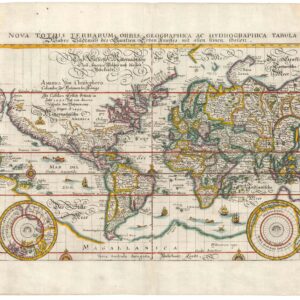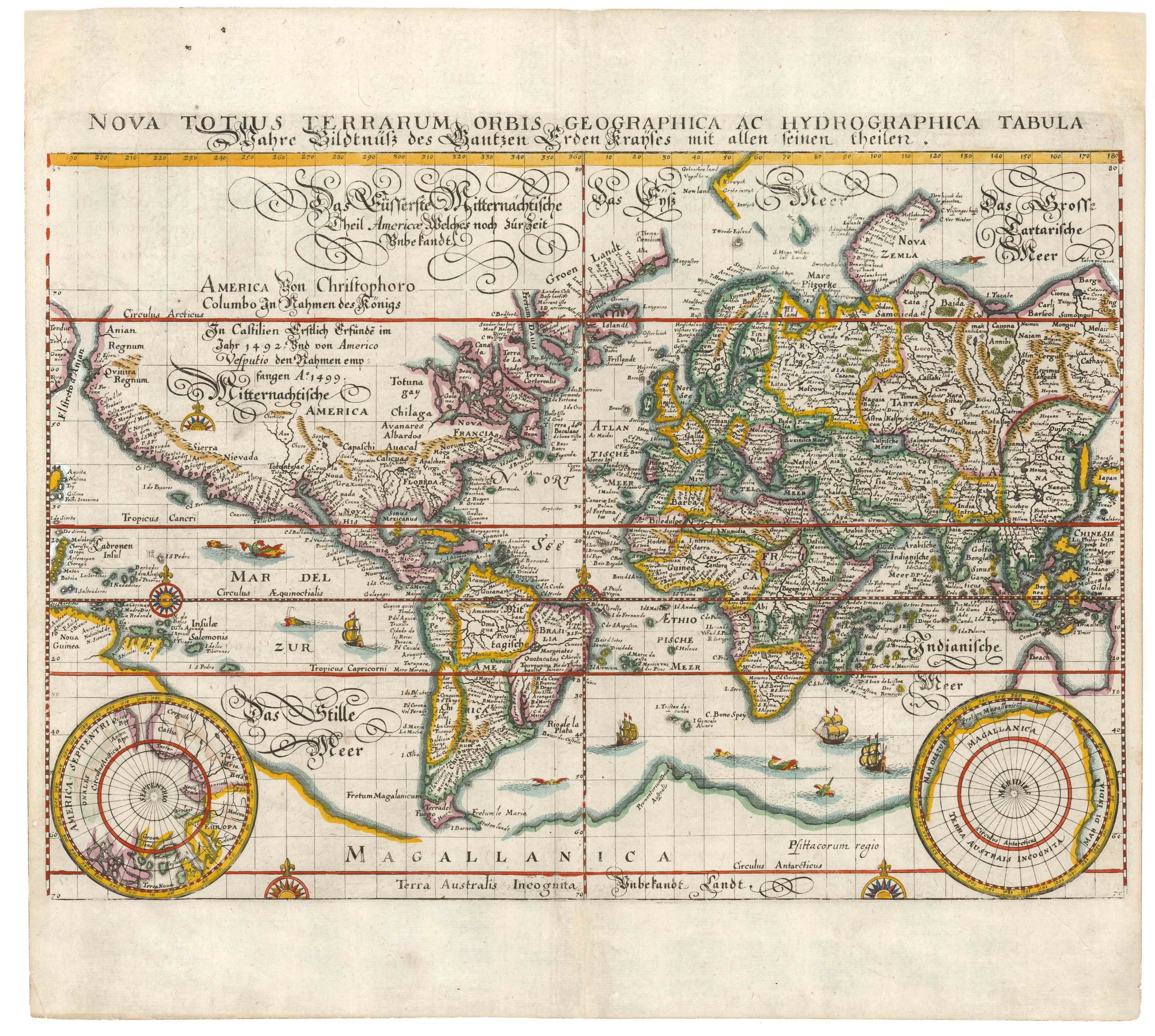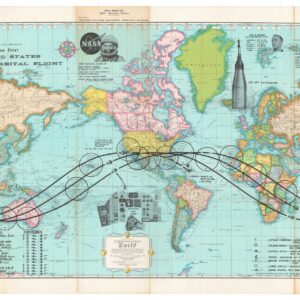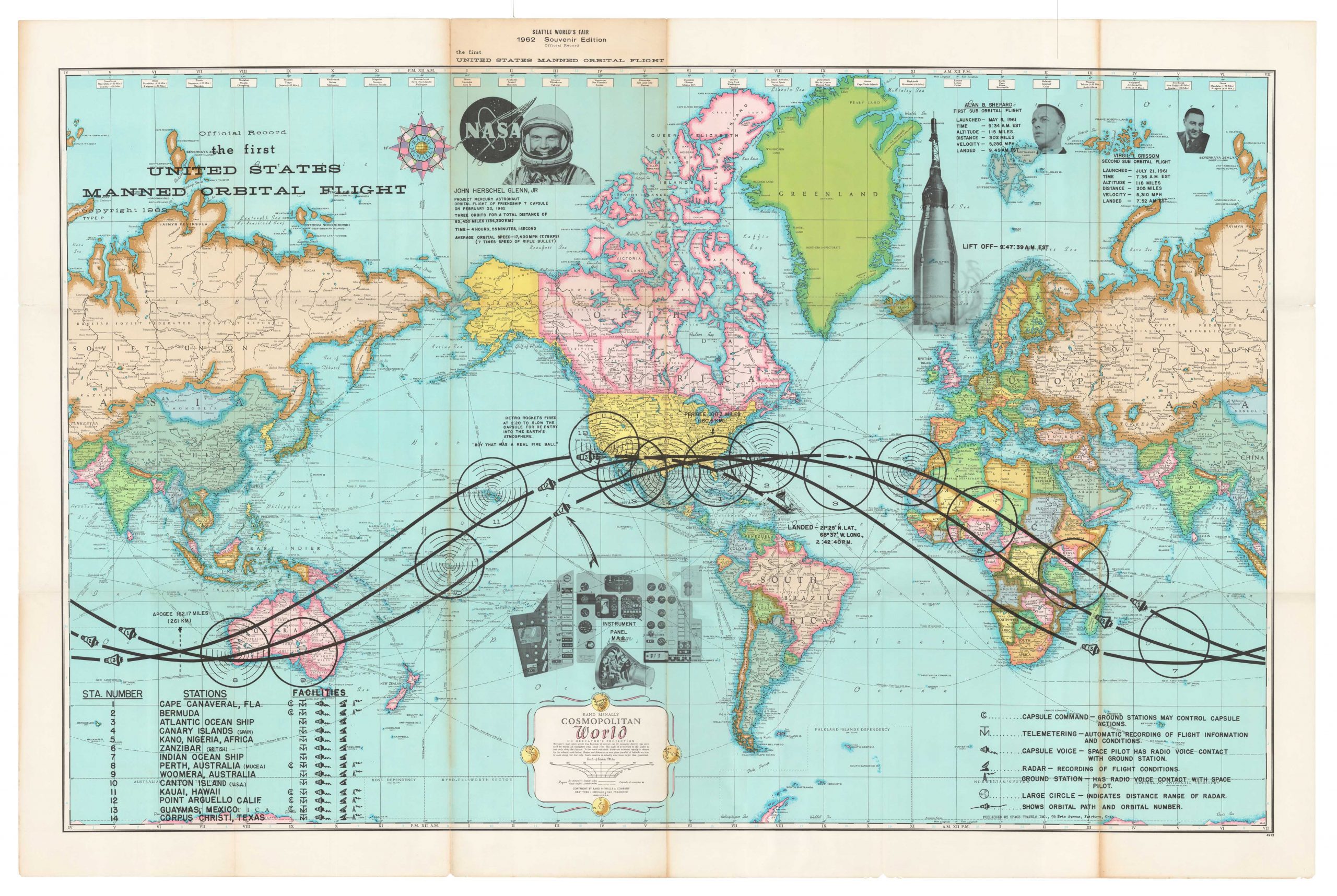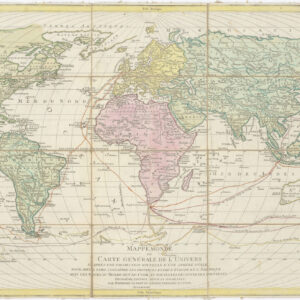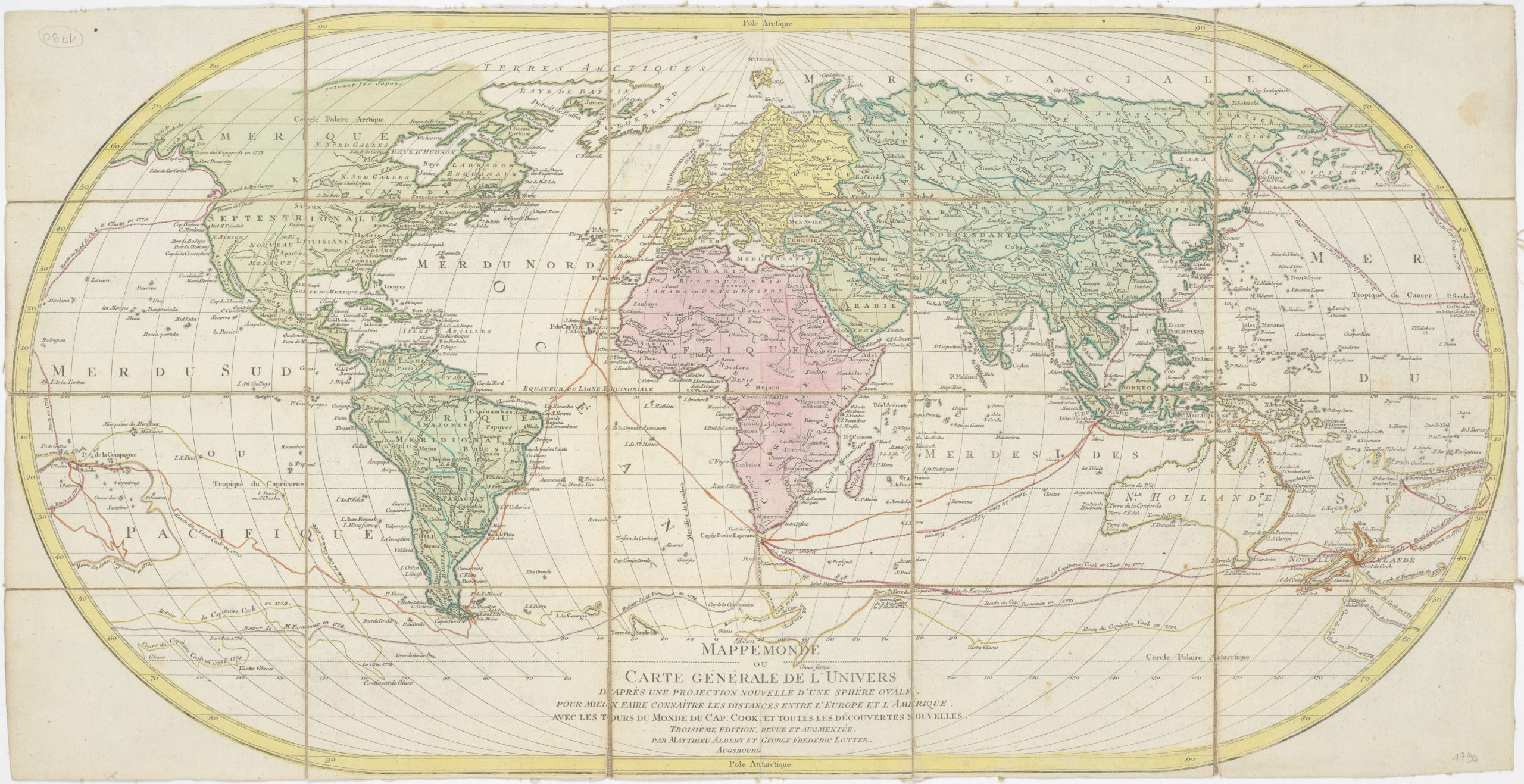Rare first state of Ruscelli’s world sea chart.
Carta marina nuova tavola
Out of stock
Description
This is the rare first state of Ruscelli’s world sea chart included in his translation of Ptolemy’s Geographia, printed by Vincenzo Valgrisi. Ruscelli’s map is a slightly enlarged version of the map which appeared in Gastaldi’s edition of Ptolemy thirteen years earlier. It features a stipple-engraved sea and numerous rhumb lines radiating from seventeen focal points. The only change seems to be the omissions of the names Tierra Del Laborador and Tierra Del Bacalaos.
The map contains only minimal interior detail but includes several important ports and trading posts including, Zanzibar on the east coast of Africa and Cambay, one of India’s two main ocean ports, visited by Marco Polo in 1293. The Magellan Strait, at the southern tip of South America is labelled and Tierra del Fuego is shown as a very large island.
North America and Asia are connected to form a single immense continent; North America and Europe are connected via Greenland. In this way, the map presents a jumbled mix of various contemporary cartographic ideas, including the thin Greenland peninsula as an extension of Scandinavia, as well as Verrazzano’s mistaken notions of a North American inland sea. Depicted across the fictitious connection between North America and Greenland is labeled Tangut: where Marco Polo met the messengers of Kublai Khan. Confusingly, however, across the continent (India Superior) to the east is the place name La China, a very early appearance of this term.
The map appeared in 1562, 1564, 1574 and in Giuseppe Rosaccio’s expanded edition of Girolamo Russelli’s Geografia in 1598 and 1599. Girolamo Ruscelli’s edition of Ptolemy’s Geographia included newly engraved copperplates by Giulio and Livio Sanuto.
A curious fact is that this map is one of two that were engraved on the same plate, printed and then separated for the book. This can be seen in the atlas by the fact that the plate mark of the map runs off the top of the page. In 1574 a new plate was used which lasted until the final edition of 1599.
Verso text: Italian.
Cartographer(s):
Girolamo Ruscelli (1518–1566) was an Italian mathematician, polygraph, and cartographer active in Italy during the early 16th century. He was born around 1518 in Viterbo to a family of minor nobility and humble origins. Throughout his life, Ruscelli moved around, living all over Italy. He started in Aquilea, but his work soon drew him to more important centers of learning. He moved first to Padua, and around 1540, he settled in Rome, where he founded his Accademia dello Sdegno. Around 1545, Ruscelli left Rome for Naples, and in 1548 he finally settled in the city that would make him most famous, Venice.
While posterity primarily remembers Ruscelli as one of the most important cartographers of the Venice School, his primary source of income came from publishing – both his works and copying the work of others. While he wrote on a broad range of subjects himself, the works plagiarised from others were often published by his partner, Plinio Pietrasanta. This lucrative relationship lasted until 1555 when Ruscelli was arrested and tried by the Inquisition for re-publishing a satirical poem by Pietrasanta without his formal permission. Any confrontation with the Inquisition was unpleasant enough, but Ruscelli may have been particularly susceptible to pressure because his wife’s family entertained Protestant sympathies. His brother-in-law was burned at the stake in Rome some years later.
The relationship with Pietrasanta had nevertheless soured, and the publishing firm was soon closed. Instead, Ruscelli partnered up with another Venetian publisher, Vincenzo Valgrisi. It was with Valgrisi that Ruscelli published his famous Ptolemaic Geografia in 1561. This atlas contained sixty-nine engraved maps sporting the latest ideas in Italian cartography. Despite containing some of the latest cutting-edge ideas about the world’s composition, Ruscelli’s atlas also drew heavily on earlier works. Forty of the 69 maps in Ruscelli’s atlas were copied almost directly from Giacomo Gastaldi’s Geografia from 1548.
Despite Ruscelli’s fame as a cartographer, he also achieved considerable recognition under his pseudonym Alessio Piemontese. His greatest success in this regard came the same year as his arrest (1555), with the publication of De Secreti del Alessio Piemontese. In this book of alchemy, Ruscelli reveals himself as a true Renaissance man, dabbling proficiently in multiple disciplines at the same time. His ‘Secrets‘ contained instructions on how to make everything from alchemical compounds and medicines to cosmetics and dyes. The work was so popular that it was re-issued numerous times over the next two centuries, and translated into French, English, German, Latin, Dutch, Spanish, Polish, and even Danish.
Condition Description
A fairly good impression, excellent condition with slight paper discoloration at centerfold.
References
Shirley, Rodney W. The Mapping of the World: Early Printed World Maps, 1472-1700. London: Holland Press, 1983, #111. Suárez, Thomas. Shedding the Veil: Mapping the European Discovery of America and the World. Singapore: World Scientific, 1992, #24, p. 86-7. Burden p. 34, Schilder p.123.
